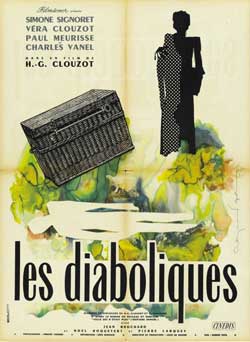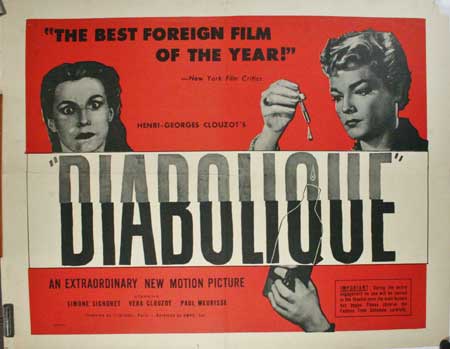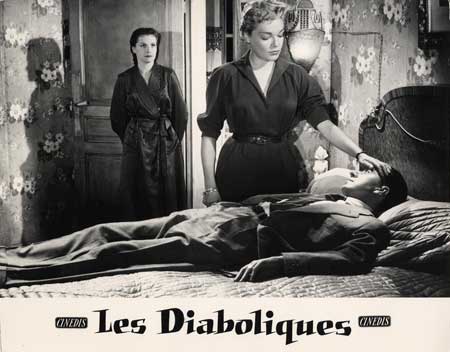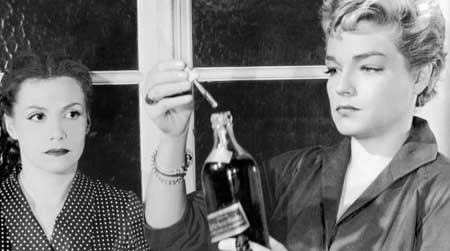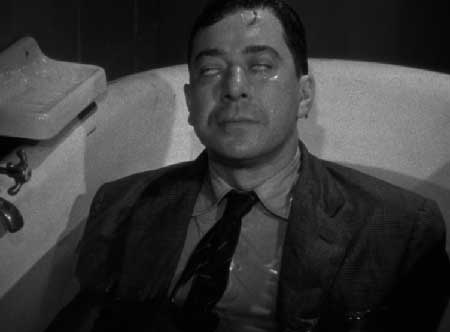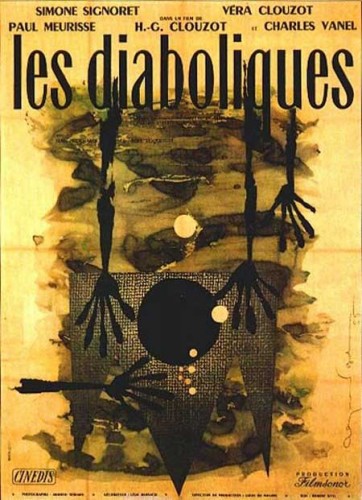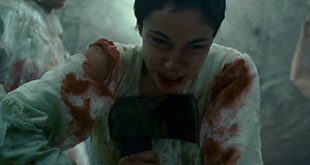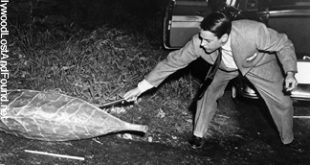SYNOPSIS:
The wife of a cruel headmaster and his mistress conspire to kill him, but after the murder is committed, his body disappears, and strange events begin to plague the two women.
REVIEW:
“She’ll bury us all. Won’t you, my little ruin?”
Henri-Georges Clouzot’s 1955 film, The Devils, is a pioneering example of early psychological noir cinema told in that claustrophobically paranoiac way often characterized by Alfred Hitchcock (in fact, legend has it, Clouzot seized the rights before that famed director by mere hours). Based on the novel, Celle qui n’etait plus (She Who Was No More) by Pierre Boileau and Thomas Narcejac, the film is equal parts horror and suspense. It was Clouzot’s follow-up to the highly-lauded, Le Salaire de la Peur (Wages of Fear), and is critically regarded as a staple of the horror genre.
Michel Delassalle (Paul Meurisse) is the sadistic headmaster of a boarding school in France. His wife, Christina (the director’s wife, Vera), is a frayed caucus of nerves broken to almost complete passivity. She is a teacher there. And there is also Delassalle’s mistress, Nicole (Simone Signoret), a domineering woman who appears at the beginning of the film with a swollen eye. She tells Christina it was Michel. Both women are aware of their triangular relationship with the headmaster but they also share a mutual hatred for the abusive man (in the novel, they are lesbians; in the film, this detail is underplayed). They scheme a murder, set up their alibis, and drown him in the swimming pool at the school. All seems predictable for a thriller until the pool is eventually drained and Michel’s body is nowhere to be found.
Throughout it all, there is a complete lack of sympathy for any of these characters. Nicole is selfish and opportunistic, untrustworthy and lacking any empathetic center. Christina is morally-grounded (and certainly gives the most convincing semblance of sainthood) yet she accepting of murder to improve her situation, not to mention hypocritical when she’s not being apprehensive. Michel is the most visually villainous, his destructive influence reaching even beyond his death.
In fact, nearly all of the characters in the film are despicable and egomaniacal in one way or another. The unkempt and slightly suspicious teachers in Delassalle’s employ are more concerned with how many glasses of wine they get to drink in the headmaster’s absence than of his well-being.
As the film progresses, the audience are introduced further to these underrepresented supporting characters: namely, Commissaire Fichet (widely considered to be the archetype for Lieutenant Columbo, played by Charles Vanel) who mysteriously (and suddenly) appears quite frequently in the second act. He is given no background (other than being a bored, retired police commissioner) and no introduction, yet he is unusually interested in the Delassalles’ affairs becoming a central character near the conclusion. He makes offhand observations, asks seemingly irrelevant questions, and acts only mildly aware of his surroundings spouting such dialogue as, “Delassalle was not a literary man. Perhaps he didn’t trust his spelling.” Fichet is a mystery in and of himself.
Clouzot was a master of the suspense dynamic and Les Diaboliques is certainly one of the most representative of his works. Heightening the tension is the lack of music (except for a piece by Georges Van Parys which bookends the film), preferring an emphasis on cinematography, editing, and a carefully-plotted screenplay, to great effect.
Clouzot was a filmmaker who often explored the underbelly of human nature and with this, perhaps his most accessible and populist film, he depicted the subtle undercurrent of evil. For there is not one embodiment of wickedness in this world but a persistent mindset of corruption and egomania persisting amongst the populace. It is not a singular cloaked figure we should fear but ourselves and our collective capability to enact evil when the Self is threatened. “Nature abhors a vacuum.”
Rating: A-
 Horror News | HNN Official Site | Horror Movies,Trailers, Reviews
Horror News | HNN Official Site | Horror Movies,Trailers, Reviews
